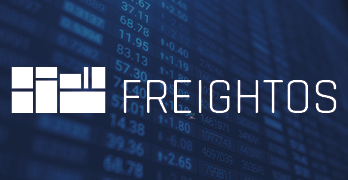FBX Index April: Current Market Summary

The Freightos Baltic Global Container Index (FBX) fell 3% this month to $4,155/FEU, still nearly triple its level this time last year, as most of the month prior to the Suez Canal incident was characterized by some small easing of conditions along the supply chain.
On the transpacific, port congestion and delays continue to be a problem, though the number of container ships waiting outside the ports of LA and Long Beach has subsided somewhat from its peak last month and there are reports that it is getting easier for shippers to secure capacity out of Asia to the US. Some of the easing may be due to shippers and carriers seeking alternate US destinations for volumes normally bound for southern California.
But Asia-US imports in March are estimated to be even higher than in February, when volumes were still at about the peak pre-Lunar New Year level of January 2020. The sustained demand surge is still being driven by a consumer shift to goods from services. The resulting strong sales by some US retailers are in turn keeping ocean volumes up as many businesses struggle to build up inventories and others place their peak season orders early to try and stay ahead of potential delays.
Though by mid-March, Asia to US West Coast rates had decreased 11% from their February peak, the sustained demand was enough to push West Coast rates up 5% by the end of March compared to the end of February, to a new high of $5,151/FEU, 240% higher than last year.
And though by mid-March, Asia to US West Coast rates had decreased 11% from their February peak, the sustained demand was enough to push West Coast rates up 5% by the end of March compared to the end of February, to a new high of $5,151/FEU, 240% higher than last year. Asia to US East Coast rates likewise dipped 9% from its February high by mid-March before ending just 1% below its level a month ago at $5,778/FEU, a 106% annual increase.
On Asia-Europe trade lanes, some easing of demand and some improvement in the degree of congestion at European and Mediterranean ports had spot rates falling since the end of February. Asia to North Europe prices decreased 11% to $7,423/FEU, still more than five times its rate this time last year, and Asia to Mediterranean prices fell 6% to $7,497/FEU, a 256% annual increase.
And though the Suez incident at the end of the month that created a two week backlog of volumes has yet to impact prices to Europe, expectations are the coming surge of volumes created by delayed and scheduled vessels arriving all at once will result in congestion, and a container shortage at Asian origin ports that in turn will lead to more delays – possibly for the next couple months.
With no available extra loaders to deploy and capacity and equipment becoming even more scarce, the effects of the Suez blockage could put renewed pressure on ocean rates.
With no available extra loaders to deploy and capacity and equipment becoming even more scarce, the effects of the Suez blockage could put renewed pressure on ocean rates. But with prices already extremely elevated, it remains to be seen how high rates will be allowed to climb.
About Judah Levine, Research Lead, Freightos
Judah is an experienced market research manager, using data-driven analytics to deliver market-based insights. Judah produces the Freightos Group's FBX Weekly Freight Update and other research on what's happening in the industry from shipper behaviors to the latest in logistics technology and digitization.
Receive monthly container market reports direct to your inbox.